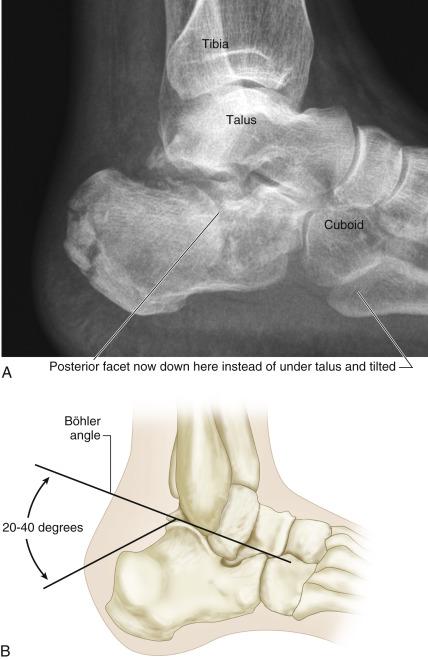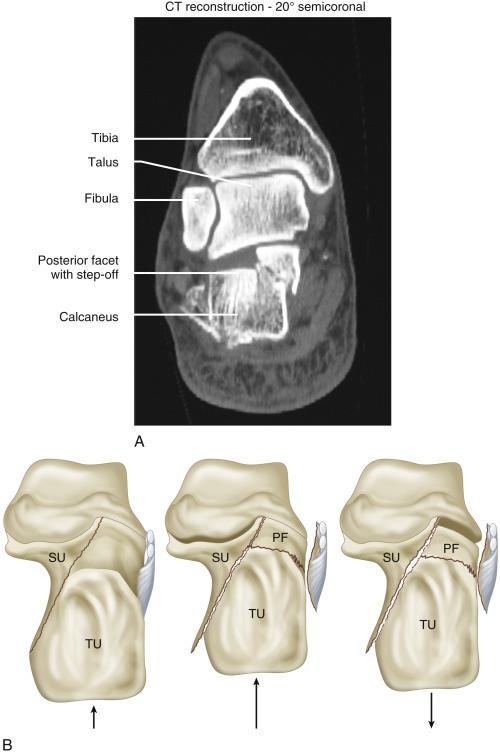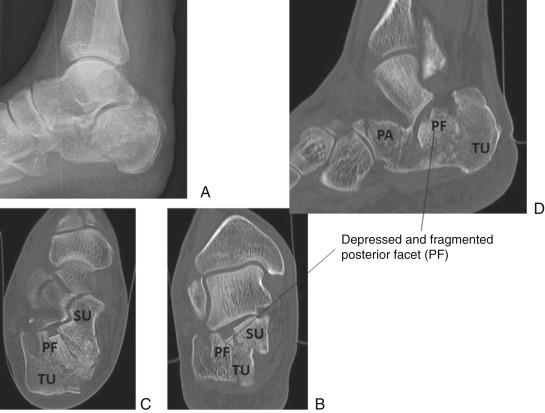Physical Address
304 North Cardinal St.
Dorchester Center, MA 02124
Intraarticular calcaneal fractures with ≥2 mm step off of the posterior facet, and intraarticular calcaneal fractures with Böhler angle <15° on lateral radiographs of the foot or ankle
Contraindications: vascular insufficiency, poorly controlled diabetes, smokers, and noncompliant patients
Relative contraindications may include various medical comorbidities
Surgical intervention with extended lateral incision may be performed urgently before swelling occurs, or within 1–3 weeks with the resolution of swelling and fracture blisters
Use of a foot pump to decrease edema prior to operative intervention
Age, smoking, workman’s compensation, substance abuse, extensive comminution, poor vascular supply, and various medical comorbidities including uncontrolled diabetes, heart disease may be relative or absolute contraindications to open reduction internal fixation (ORIF)
Examination of the foot for closed calcaneal fractures often reveals significant swelling, ecchymoses, and fracture blisters, which may be serous or serosanguinous. Patients are unable to load their heels. Open fractures often indicate greater energy of impact. Open fractures are typically medial although may be lateral or plantar. Pain with passive motion of the toes may indicate an impending compartment syndrome, which may be confirmed by monitoring deep plantar and calcaneal compartment pressures. Late signs of compartment syndrome include pallor, paresthesia, and loss of pulses. As much as 10% of calcaneal fractures are associated with spine fractures and 25% with additional lower extremity fractures. A thorough physical examination should be performed.
Lateral views of the calcaneus and foot should be obtained in both the injured and contralateral feet. Lateral radiographs may show fractures of the calcaneus associated with a double contour at the level of the subtalar joint or below, flattening of Böhler angle, normally 25–40°, and loss of calcaneal pitch ( Fig. 36.1 ). If a calcaneal fracture is suspected or seen on the lateral view, a computed tomography (CT) scan should be obtained to analyze the fracture pathology and make a treatment plan ( Fig. 36.2 ). Other radiographic projections are optional: Harris views may show fractures through the posterior facet, widening of the calcaneus with lateral wall impingement, and loss of calcaneal height. Dorsoplantar (anteroposterior) views with the tube tilted 20° may demonstrate fractures of the calcaneocuboid joint. Anteroposterior Brodén views with the foot internally rotated 45° and the foot plantar flexed 10–40° will show dislocation of the posterior facet and are useful for intraoperative fluoroscopic control of reduction.


Axial cuts (1 mm) with large overlap should be obtained with the following reconstructive views oriented:
Perpendicular to the posterior facet to visualize gapping or step off and identify the constant fragment containing the sustentaculum tali ( Fig. 36.3A–B )

Parallel to the plane of the floor to obtain cuts perpendicular to the calcaneocuboid joint ( Fig. 36.3C )
Sagittal views to visualize the orientation of the fracture fragments of the posterior facet ( Fig. 36.3D )
Calcaneal fractures may be treated nonoperatively with bulky Jones dressings and splinting for comfort. The foot should be kept level, avoiding a dependent position. Early foot and ankle range-of-motion exercises should be initiated as soon as tolerated at 1–3 weeks to decrease stiffness; additionally, cool Epsom soaks may further reduce the swelling. Weight bearing is started at 3 months.
Complications associated with nonoperative protocols include subtalar stiffness, pain, posttraumatic arthritis, loss of foot dorsiflexion, widening and/or axial deviation of the heel, peroneal dislocation, lateral wall impingement, calcaneofibular abutment, and difficulty walking on uneven ground.
Operative treatment of closed fractures with an extensile lateral incision may be performed immediately, or with resolution of swelling and fracture blisters (positive wrinkle test).
Percutaneous or mini-open reduction techniques should be performed within the first week, while the fracture fragments are still easily mobilized. Some surgeons utilize lateral incisions over the sinus tarsi, or medial incisions, which will be discussed in separate chapters (see Procedure 38 , Procedure 39 ).
Become a Clinical Tree membership for Full access and enjoy Unlimited articles
If you are a member. Log in here